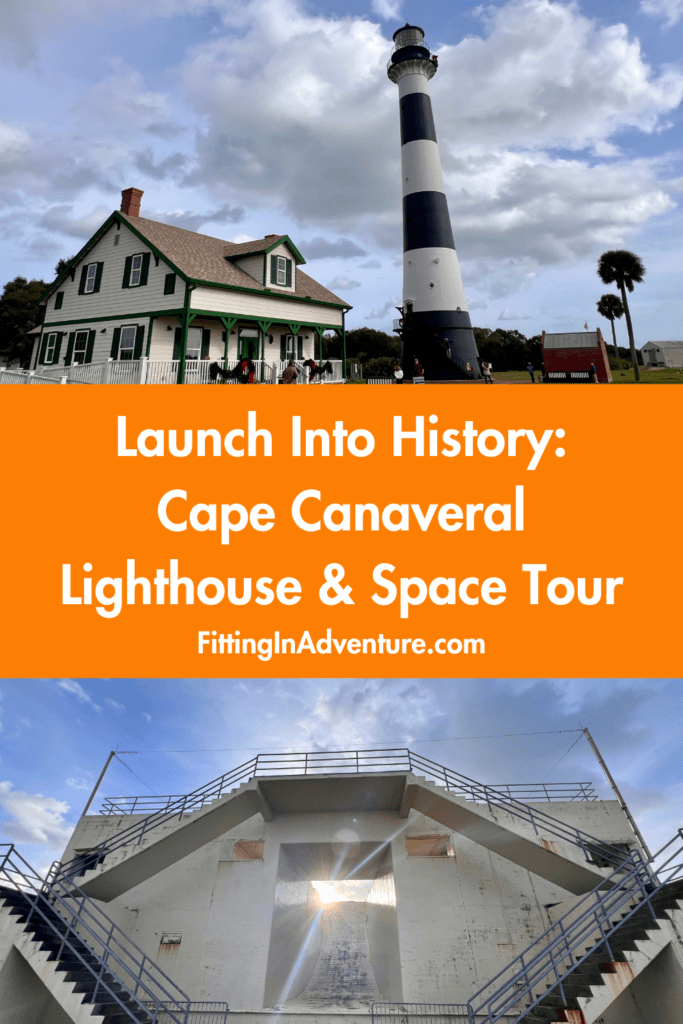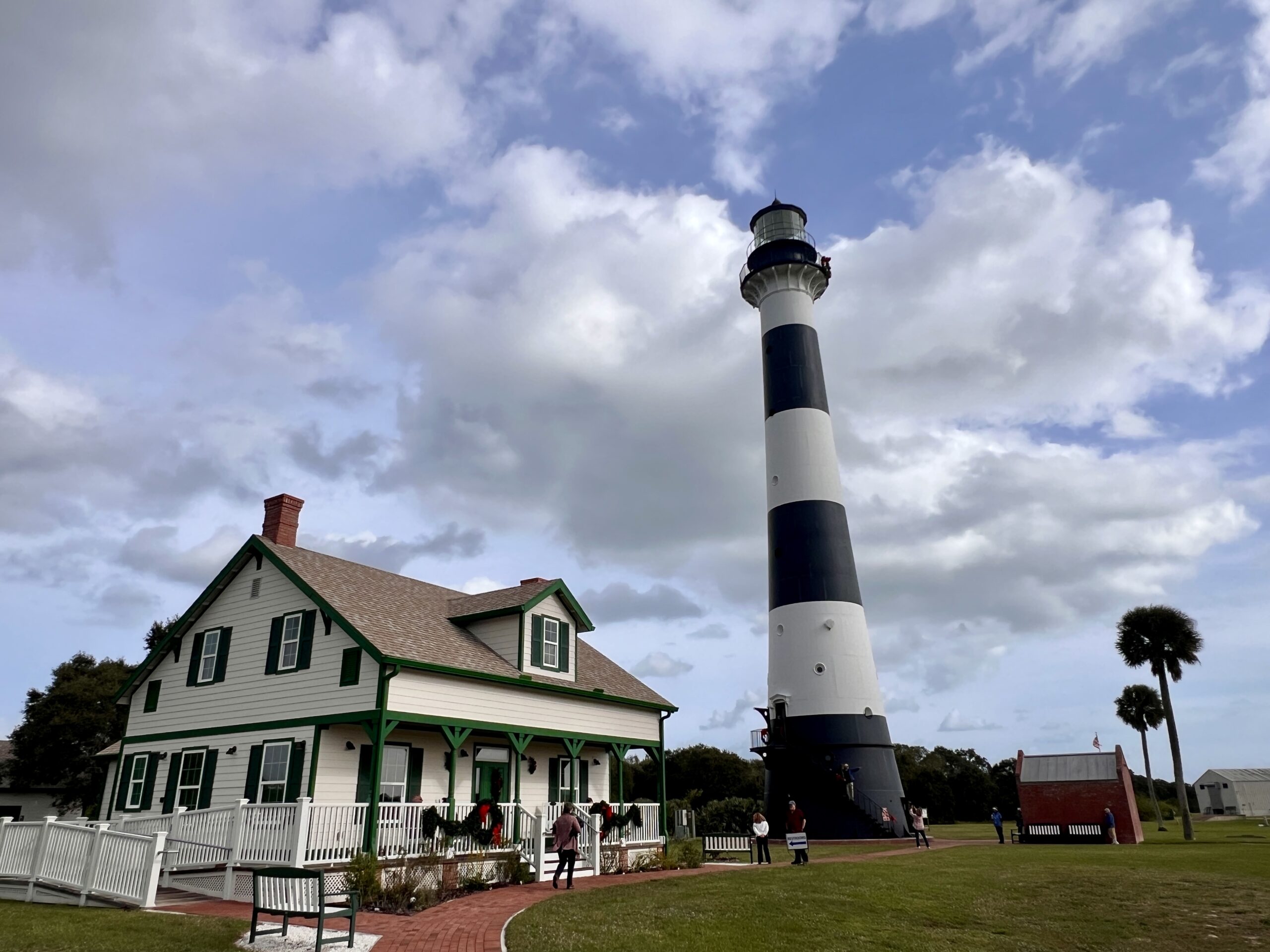Cape Canaveral’s history is rooted in exploration. From the indigenous people who migrated to the area thousands of years ago to those brave pioneers who launched into the cosmos in the 50s. While not much is known of the early people who lived here, some museums and tours tell the story of America’s space program. One such tour, and the only authorized tour company to access the Cape Canaveral Space Force Station, is Canaveral Lighthouse Tours. The standard tour is approximately 4 hours and covers a lot.
Disclosure: Some links on our site are affiliate links. If you purchase a linked item, we will make a commission, at no extra charge to you.
Launch Complex 9
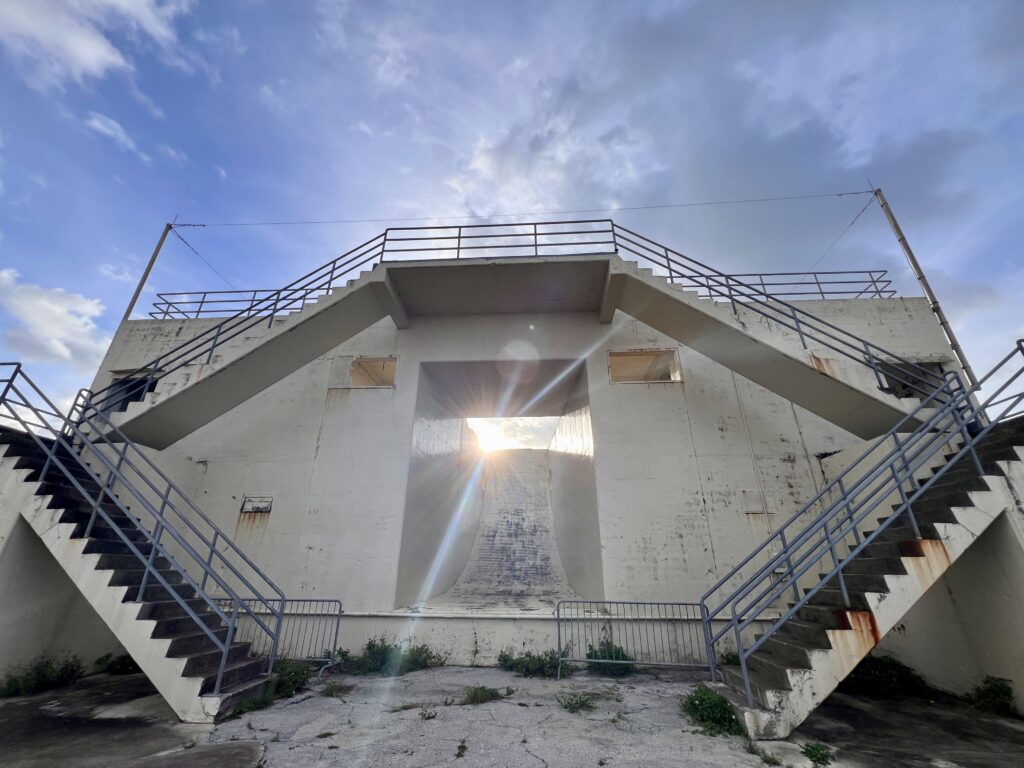
The first stop on your tour is at Launch Complex 9. It was used for testing the SM-64 Navaho missiles. The Navaho was a supersonic, nuclear-armed cruise missile. The Navaho program was canceled due to poor performance of the missile in testing. 8 of 11 test launches of the prototype failed. However, the complex now has a somber purpose. In the abandoned missile silos located on the site are much of the remains of the Space Shuttle Challenger. The debris was lowered into the silos in early 1987 and sealed with concrete caps. Your visit is a solemn reminder of the dangers of space exploration.
Cape Canaveral Lighthouse
The next stop along the tour is at the lighthouse. The Cape Canaveral Light, as it is known, is the only fully operational lighthouse owned by the United States Space Force. It is also the oldest standing structure on the Cape. The light was first established in 1848 to warn mariners of the shoals 13 nautical miles off the coast of the Cape. The original light was a conical brick tower that stood 65 feet (20 M) and was lit by 15 Lewis Lamps powered with whale oil. However, the light was heavily criticized with complaints that the light was too weak and too low to adequately warn ships until it was too late.
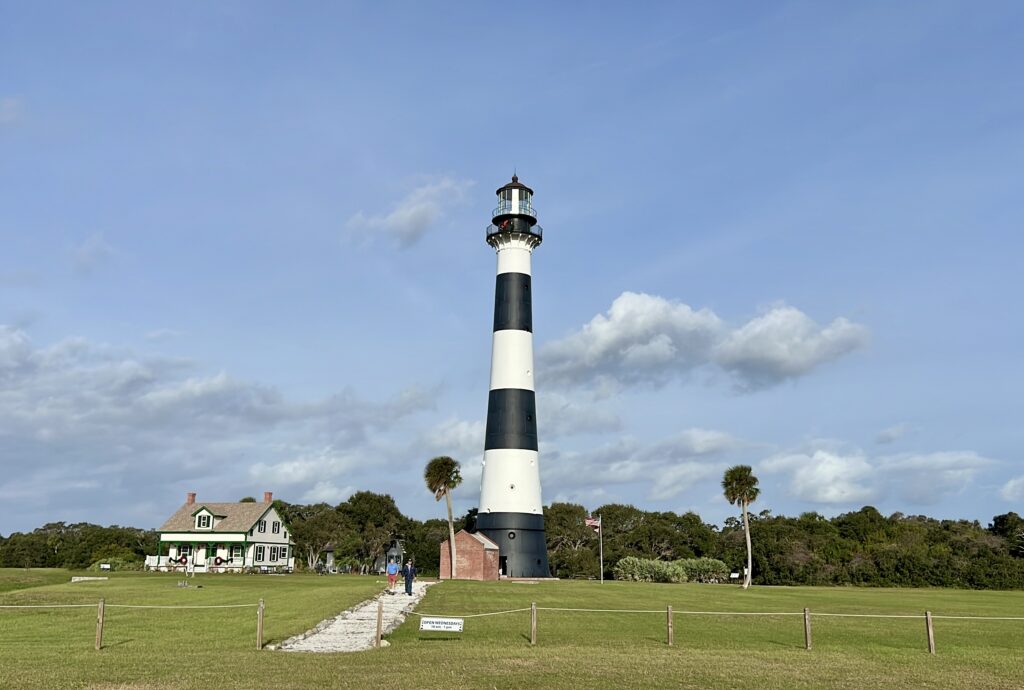
In 1860, the US Government approved the construction of a new lighthouse to address these concerns. Construction was halted during the Civil War and resumed at its conclusion. Instead of brick, the replacement tower was to be made of cast iron plates. This was to reduce costs and allow the tower to be disassembled and reassembled at a new location to escape the encroaching sea. The interior of the tower was lined with bricks to add stability and insulation. This new lighthouse, completed in 1868, was outfitted with a first-order Fresnel Lens (pronounced Frey-nel). In a Fresnel Lens, hundreds of specially cut pieces of glass surround the lamp. The design intensifies the glow of the light into a single, intense beam that can be aimed in a specific direction. These lenses meant that the light could be seen from greater distances, increasing its safety for mariners navigating by it.
The lower three levels of the lighthouse served as the living quarters for the keepers. There is a complete kitchen, living room, and bedrooms. The entrance is on the third floor and is accessible by an exterior staircase. This was to withstand flooding from storm surges and hurricanes. But, as anyone who visits Florida in the summer can attest, living in a cast iron lighthouse soon became unbearable. So keepers and their families built makeshift dwellings on the grounds until 1876 when the Government allocated $12,000 to construct permanent housing. These floors are accessible with the tour and are a great glimpse into what living in these would be like in the 19th Century.
When President Truman signed Public Law 60, on May 11, 1949, Cape Canaveral became the Joint Long Range Proving Ground. A site used for missile testing by the military. When rockets began launching from the Cape in the early 50s, all its residents were relocated except for the lighthouse keepers. But even they were relocated in 1960, with the automation of the light. Ownership transferred from the Coast Guard to the Air Force on December 14, 2000. In 2002, the Cape Canaveral Lighthouse Foundation was formed to preserve the history of the Cape Canaveral Lighthouse and provide tours to the public.
Hangar C
Next to the lighthouse is Hangar C, the oldest missile assembly building on Cape Canaveral Space Force Station. It was completed in July 1953. Only 3 years after the first rocket was launched from the Cape. For 3 years, from 1953 to 1956, it was the only permanent missile assembly building on the Cape. Because of this, nearly every type of Air Force long-range guided missile program between those years utilized the hangar. It also played a supporting role in the U.S. Navy’s Project Vanguard, the country’s first official satellite program and the second successful satellite program after the Army’s Explorer series. It remained an assembly building until 1994. Although similar to other Air Force hangars, missile assembly buildings such as Hangar C were configured differently. Along the sides of the large, open central space were labs, workshops, storage areas, and offices.
Wernher von Braun and his Army Ballistic Missile Agency (ABMA) teams were the first to use Hangar C. Mr. von Braun even had an office on the second floor. Some of the other programs that used the hangar were the Bomarc surface-to-air ramjet missile, Navaho, Matador, Mace, and the tethered lighter-than-air (or TELTA) program. Today, the Air Force Space & Missile Museum showcases around 30 rocket and missile restorations.
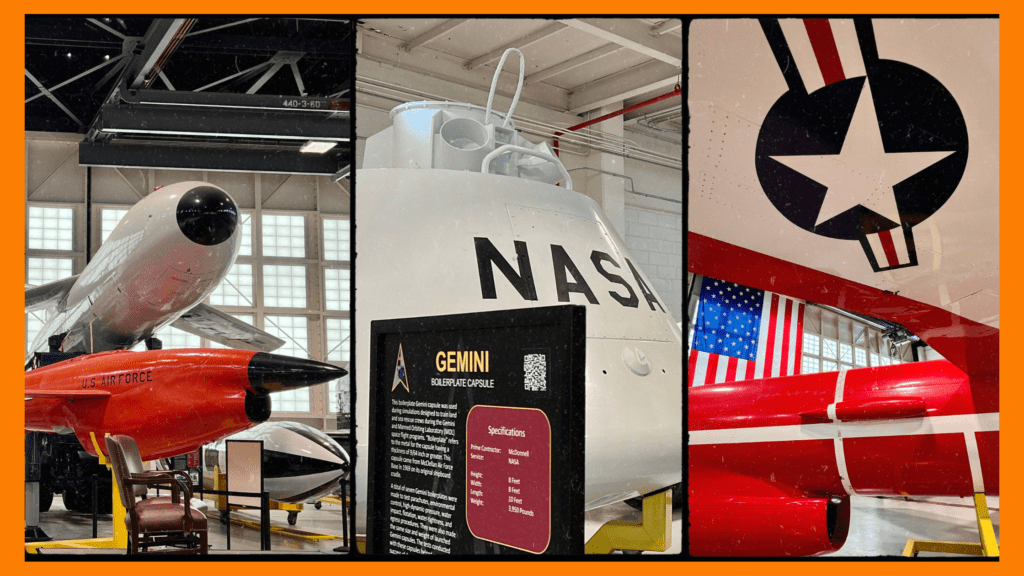
Launch Complex 5/6 (and Launch Complex 26)
Your last stop is at Launch Complex 5/6, adjacent to Launch Complex 26. The name derives from the early practice of naming the complex after the pad number. Early launch complexes had a single pad making the naming very straightforward. Launch Complex 1 hosted pad 1 and so forth. However, Launch Complex 5/6 hosted two pads on a single complex, giving it a unique designator. Later, the naming practice of using a numeric designator for the launch complex with an alphabetic designator for the pad resulted in Pads 26A and 26B on Launch Complex 26.
Complex 5/6 was the launch site of the early Mercury-Redstone flights. Including Mercury-Redstone 3 (MR-3) on May 5, 1961. It was the first manned launch by the United States with Alan Shepard onboard. Mercury-Redstone 4 (MR-4) followed on July 21, 1961, with Gus Grissom. Both were launched from Pad 5 and flew sub-orbital missions. The interior of the blockhouse contains much of the original equipment that was used to launch the Mercury Redstone flights.
Pad 5 has a full-sized replica of a Mercury-Redstone vehicle and Pad 6 has a launch ring set atop the pad scale. These pads were extensively modified for these missions and, as a result, were never used again after Grissom’s flight.
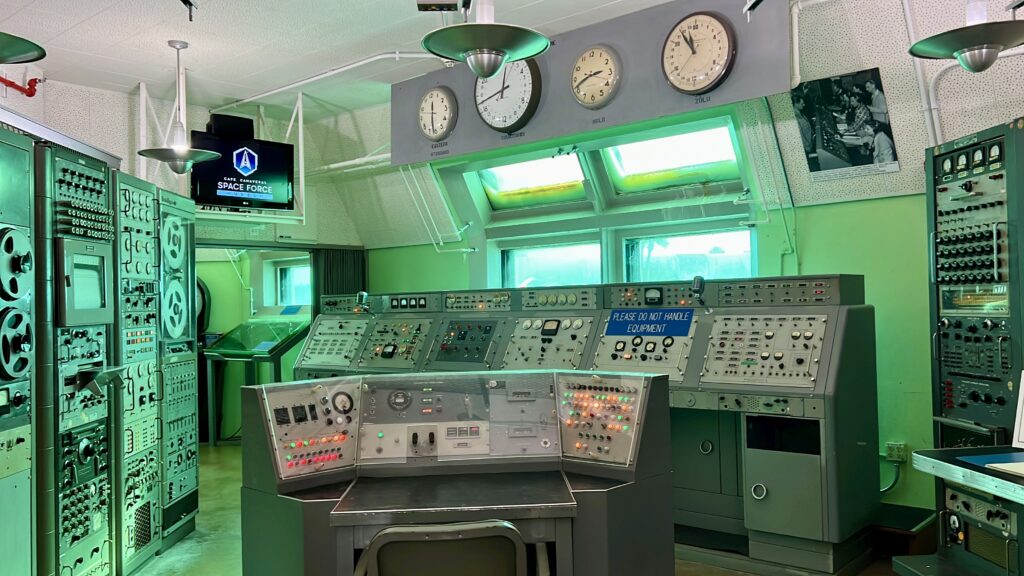
Do I have to take a tour?
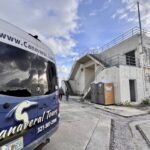
Because the Lighthouse and Launch Complexes are located on Cape Canaveral Space Force Station (CCSFS), a pre-approved security clearance and escort are required. Canaveral Lighthouse Tours provided this with our reservation.
If I have a military ID, can I drive out myself?
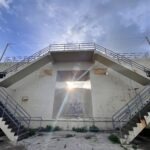
No. Only personnel with working privileges for CCSFS can access the station without an approved tour.
Can I go up into the lighthouse?
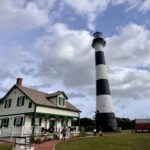
Yes. The first five floors are accessible and docents will escort you through and explain what you are seeing. However, you must be at least 48” tall and wear closed-toed shoes: no flip-flops, slip-on shoes, or high-heels.
Can I take pictures on the Cape Canaveral Lighthouse & Space Tour?
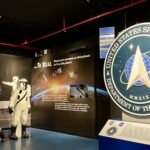
Yes. You may take pictures throughout most of the tour. There are a few buildings you cannot photograph and the tour guides will tell you which buildings these are.
How much is the tour?

Canaveral Lighthouse Tours has 4 options. Visit their website https://www.canaverallighthouse.tours/book-now/ for the most up-to-date pricing.
